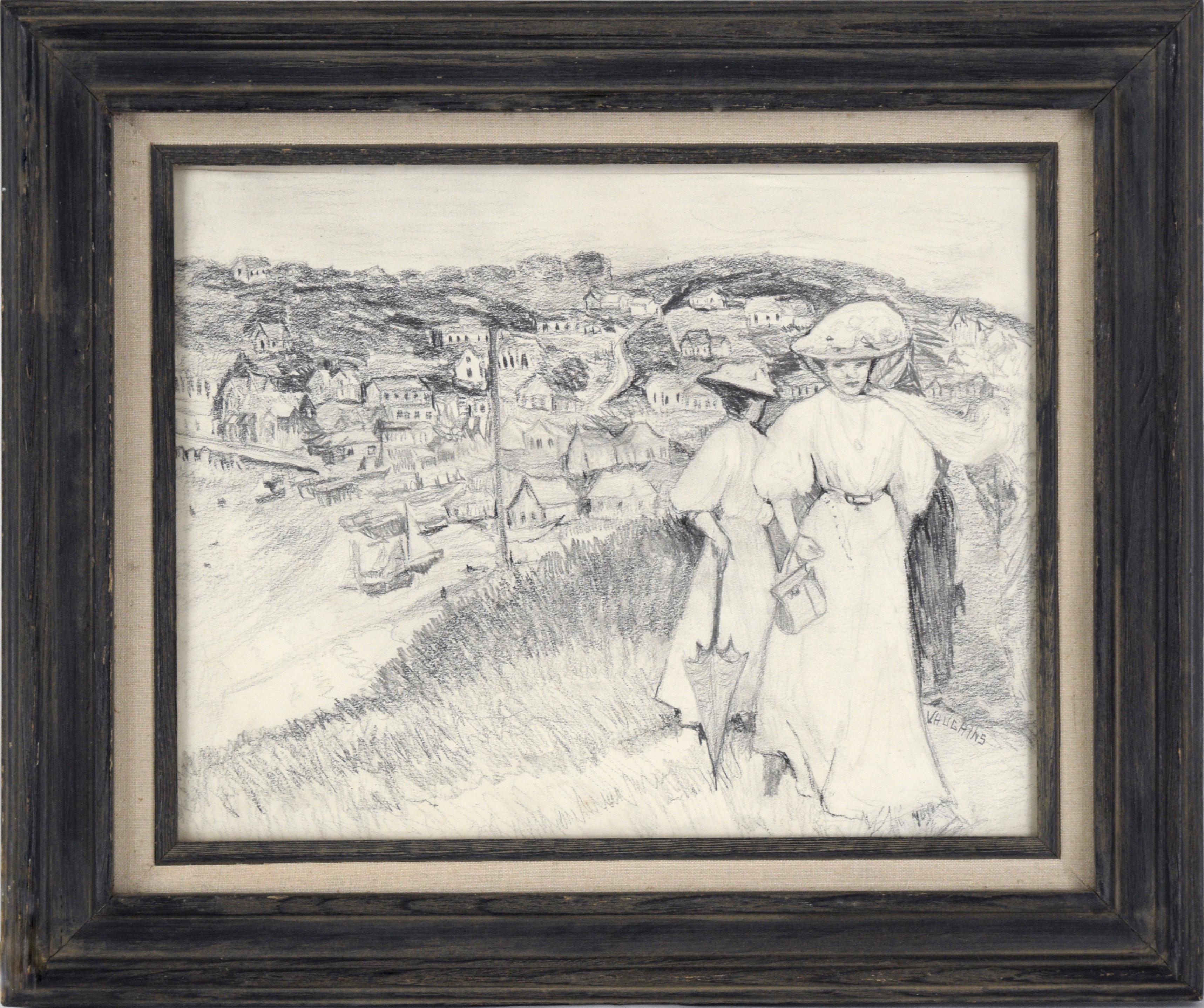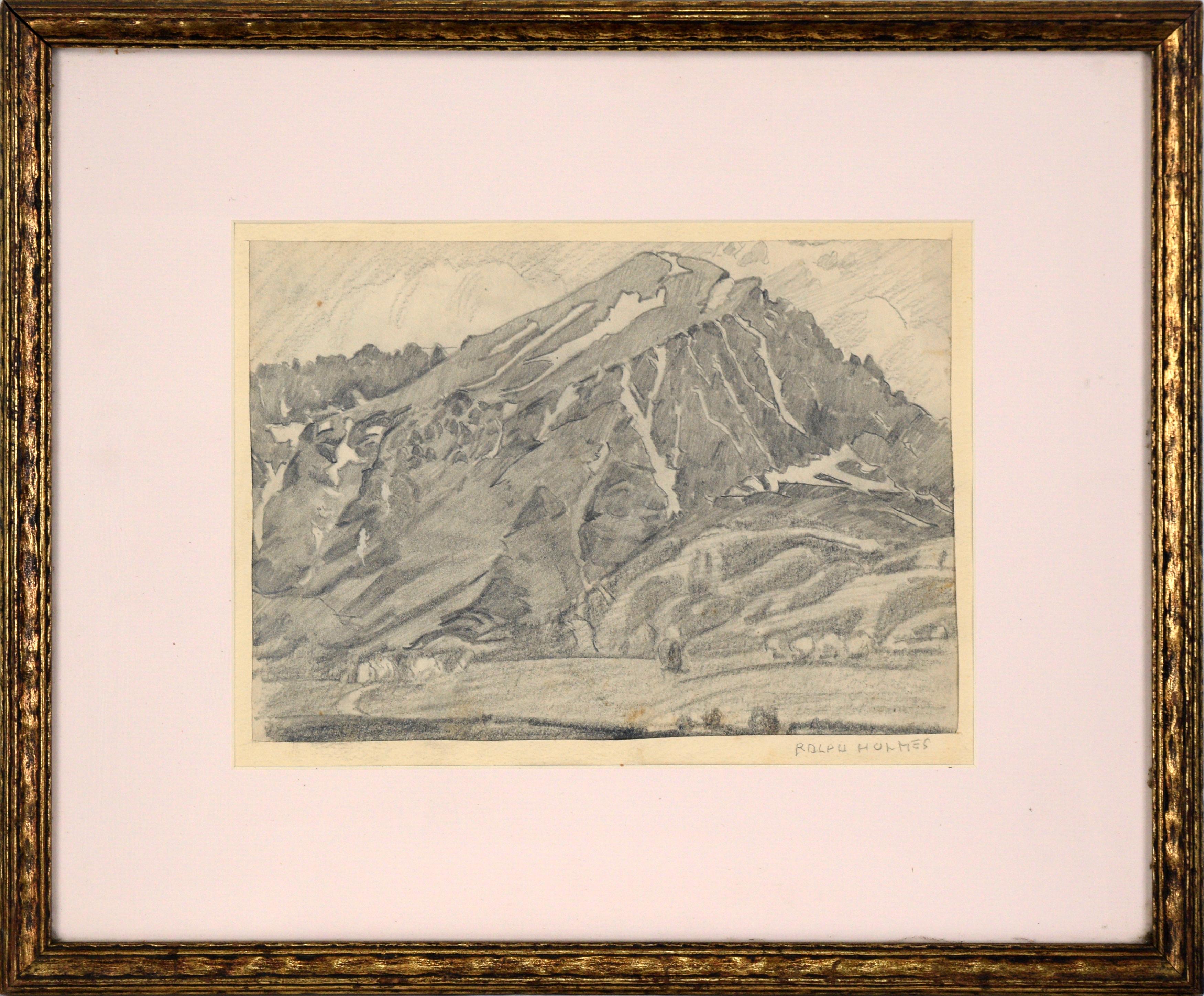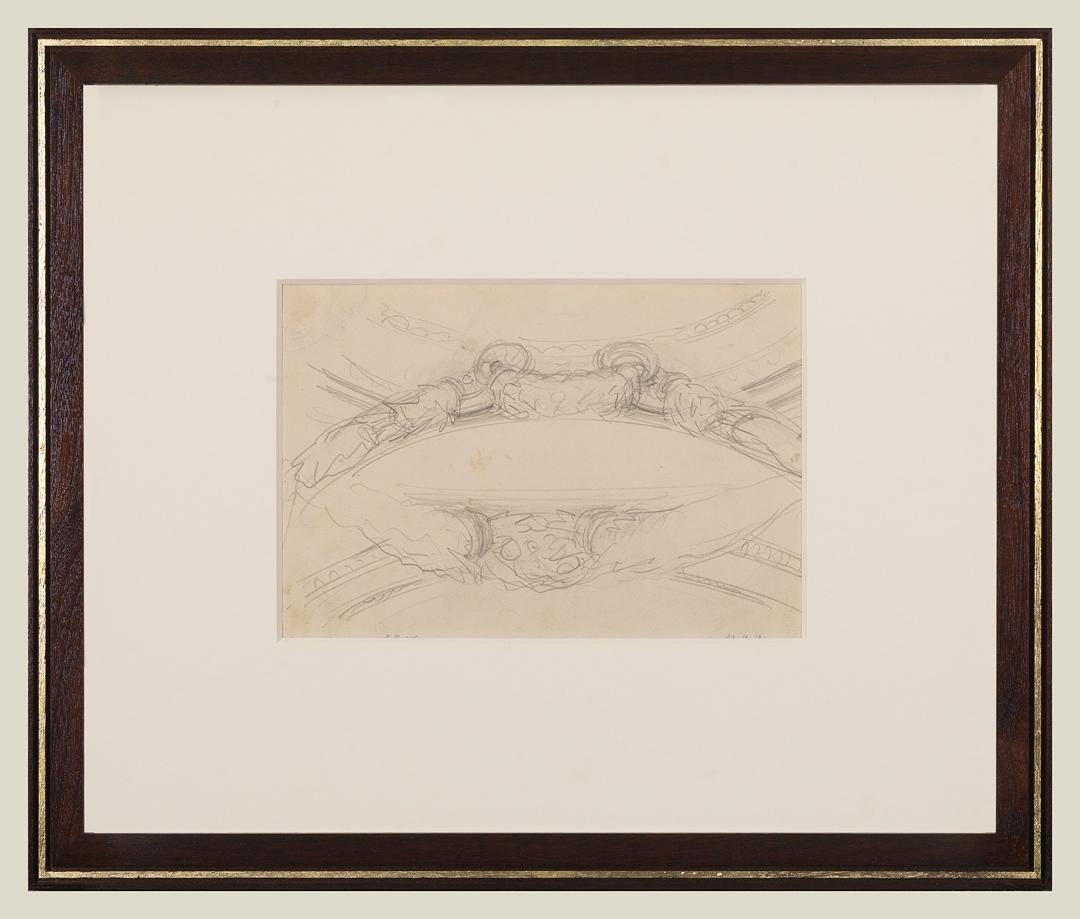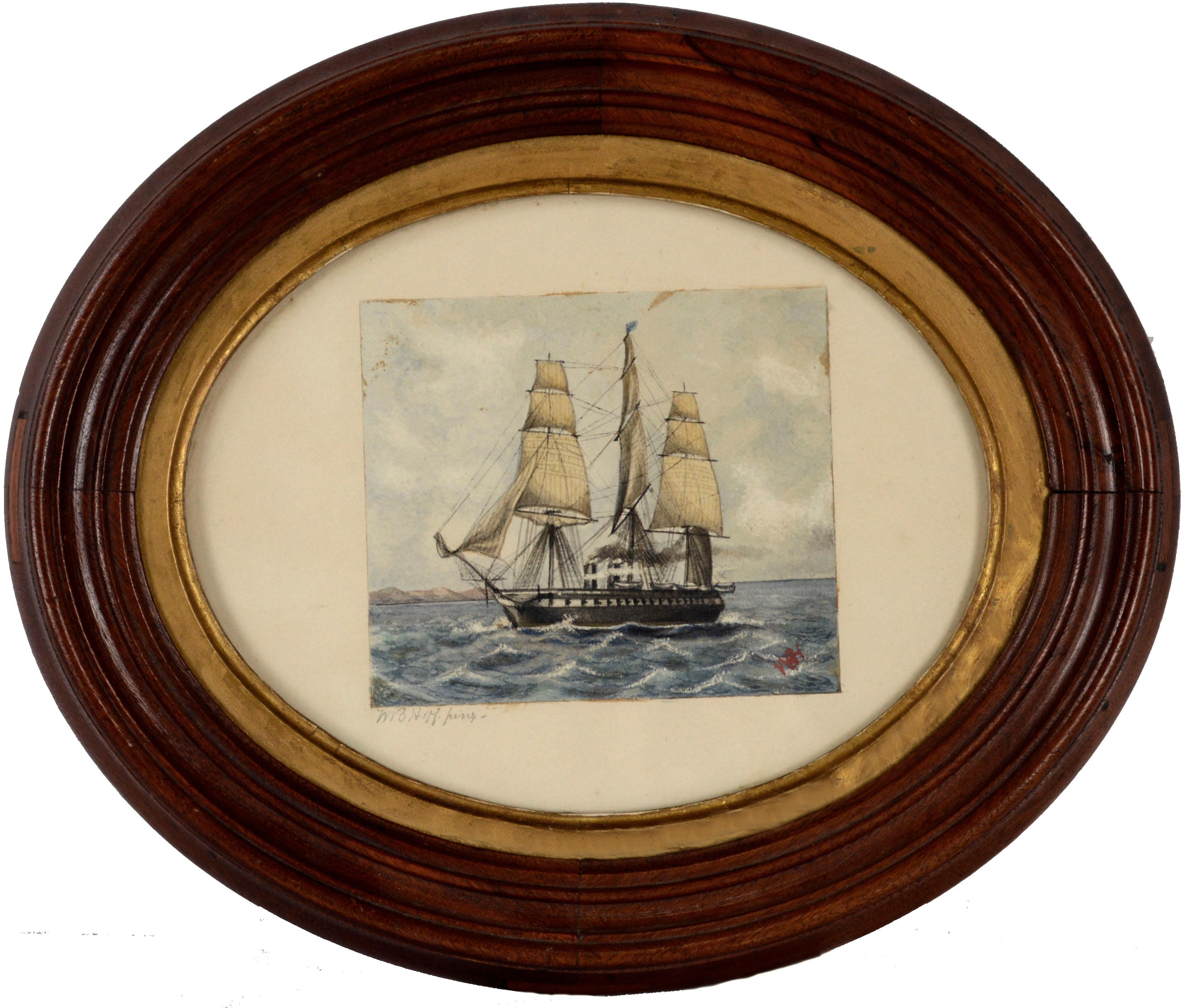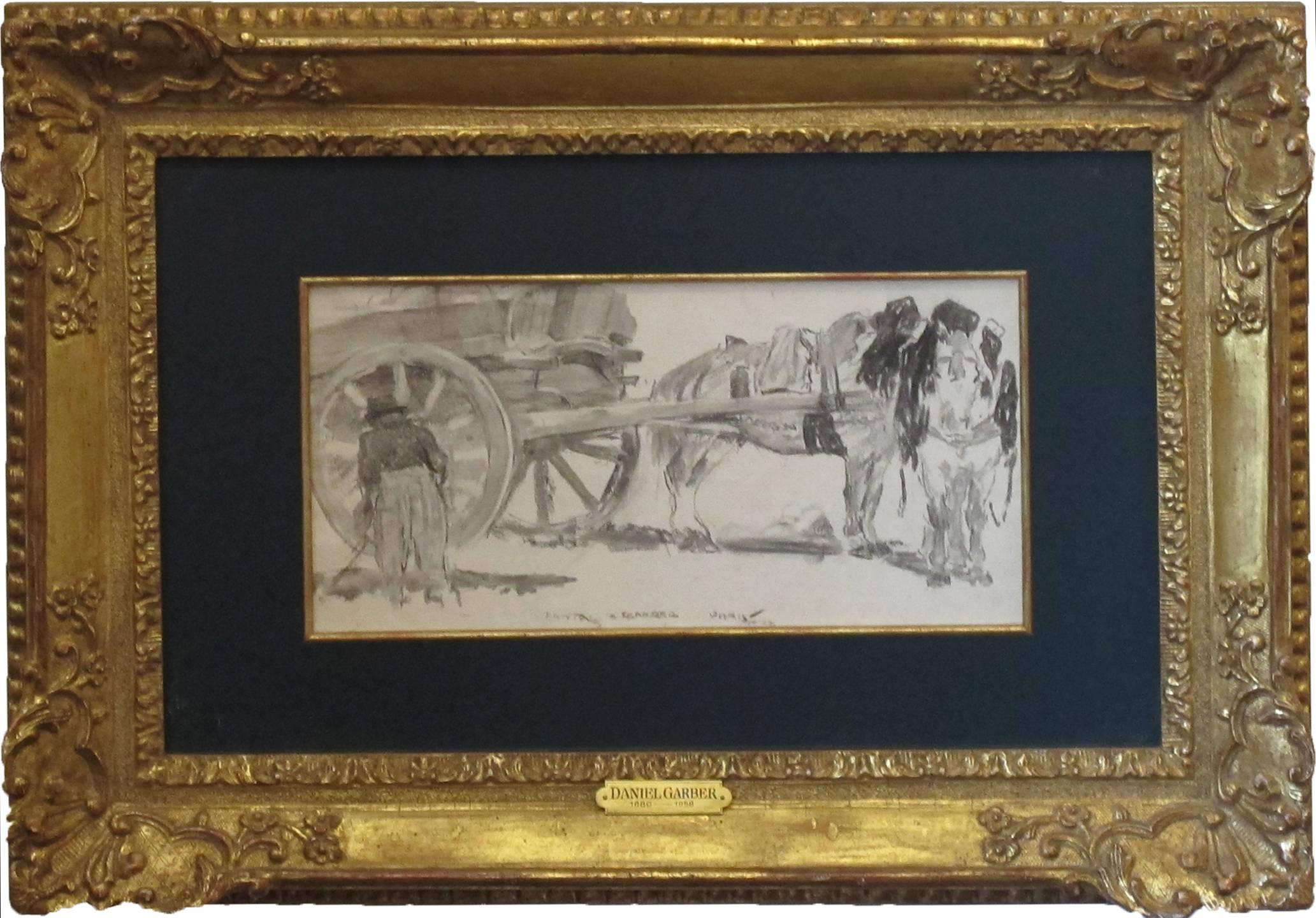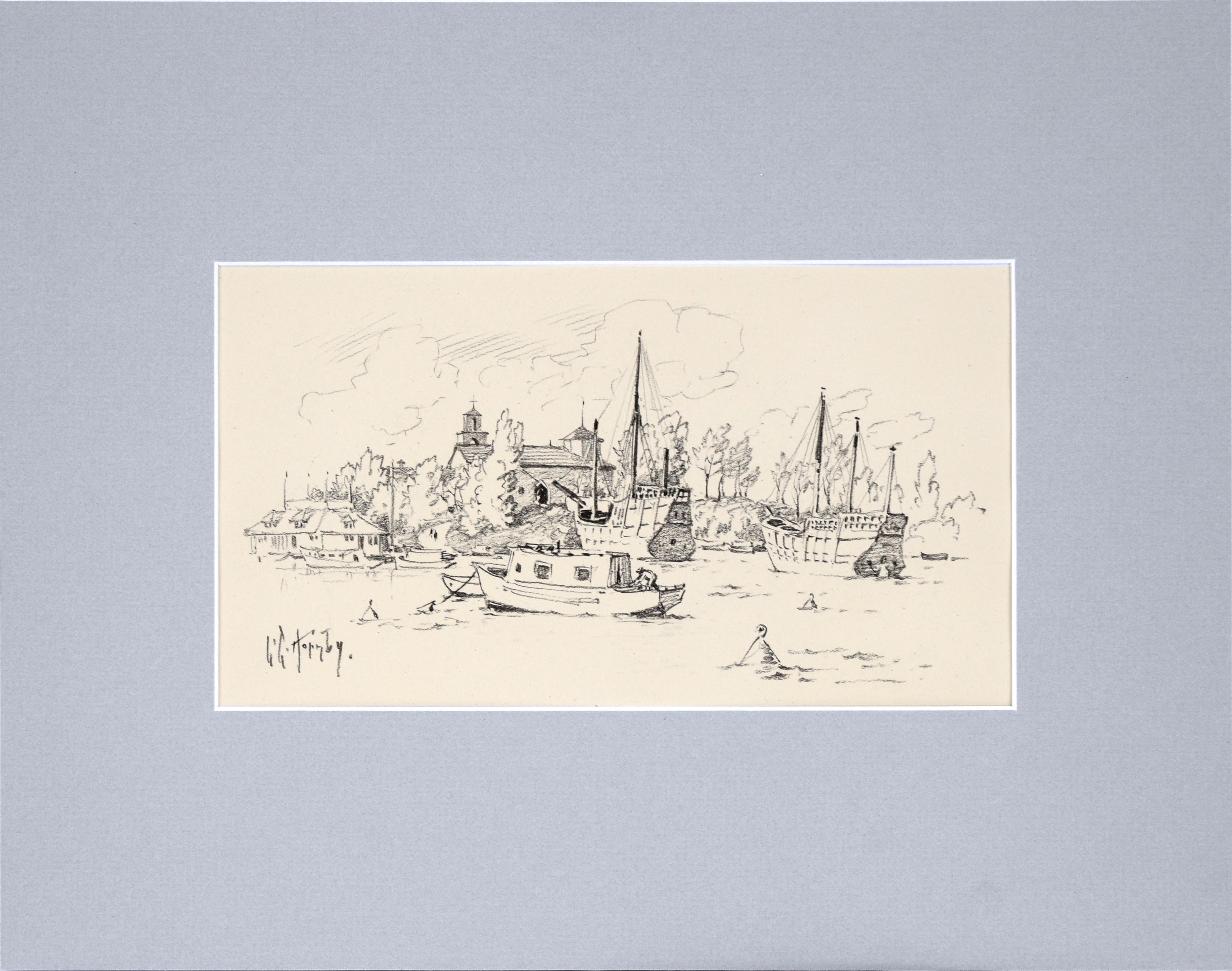George Elbert BurrMorning Near Arizona, 1880s Summer Southwestern Desert Landscape Drawing1888
1888
About the Item
- Creator:George Elbert Burr (1859 - 1939, American)
- Creation Year:1888
- Dimensions:Height: 17 in (43.18 cm)Width: 20.25 in (51.44 cm)Depth: 1 in (2.54 cm)
- Medium:
- Movement & Style:
- Period:
- Framing:Frame IncludedFraming Options Available
- Condition:very good vintage condition.
- Gallery Location:Denver, CO
- Reference Number:
George Elbert Burr
George Elbert Burr was an American printmaker and painter best known for his etchings and drypoints of the desert and mountain regions of the American West. He enjoyed success early, providing illustrations for Harper's, Scribner's Magazine, Frank Leslie's Weekly, and The Cosmopolitan. In 1892, he began a four-year project illustrating a catalog of Heber R. Bishop's collection of jade antiquities for the Metropolitan Museum of Art. This project, producing etchings of over a thousand artifacts, paid well enough for Burr to embark on an extended tour of Europe upon its completion with his wife. Over the next five years, as they traveled in Italy, Germany, and the British Isles, Burr amassed sketches and watercolors that would provide the source material for his copper plate etchings of European scenes. In 1924, the Burrs settled in Phoenix, Arizona, where he would remain for the rest of his life. The change of scenery allowed him to round out his oeuvre of Western landscapes with expansive views of the Sonoran and Mojave deserts. He and his wife, who died in 1941, are buried in Cameron. Today, George Elbert Burr is widely considered to be one of the finest of the early 20th-century American etchers. His prints are in several prominent collections including the Smithsonian American Art Museum, the British Museum, the French National Print Collection, Luxembourg Gallery, Victoria and Albert Museum, the New York Public Library, Brooklyn Museum, Museum of Northern Arizona and the Congressional Library in Washington, D.C.
- ShippingRetrieving quote...Ships From: Denver, CO
- Return PolicyA return for this item may be initiated within 7 days of delivery.
- California Coast Landscape Marine Painting, Watercolor Painting Rocks, WavesBy Charles Partridge AdamsLocated in Denver, COCalifornia coastal painting by early 20th century artist, Charles Partridge Adams circa 1925. Watercolor on paper, not signed, attributed ...Category
1920s American Impressionist Landscape Paintings
MaterialsWatercolor
- Silver Plume, Colorado, Framed Colorado Mountain Landscape Oil Pastel DrawingBy Elsie Haddon HaynesLocated in Denver, COSilver Plume, Colorado - near Georgetown, mountain landscape with fall colors, Aspen and Pine trees, river, houses and mountains by early 20th century Co...Category
1930s American Impressionist Landscape Drawings and Watercolors
MaterialsOil Pastel, Pastel
- Sangre de Cristo Mountains, Southern Colorado Watercolor Landscape PaintingBy Alfred WandsLocated in Denver, COVintage original modernist watercolor painting of the Sangre de Cristo Mountain range in Colorado by Alfred Wands (1904-1998). A farm in th...Category
20th Century American Impressionist Landscape Paintings
MaterialsWatercolor
- Colorado Ranch Summer Landscape Painting, 1940s Landscape WatercolorBy Irene D. FowlerLocated in Denver, COOriginal western landscape painting of trees near a ranch in Colorado by Irene Fowler, one of Colorado's preeminent women artists of the 20th century. Presented in a custom frame, outer dimensions measure 17 ½ x 23 ½ x 1 ½ inches. Image size is 11 ½ x 17 ¼ inches. Painting is clean and in very good vintage condition - please contact us for a detailed condition report. Expedited and international shipping is available - please contact us for a quote. About the Artist: An important figure in the development of Denver as an artistic city, Irene Fowler was a public school teacher and founding member of the Denver Artist’s Guild (now the Colorado Artist’s Guild) in addition to being a prolific artist. She exhibited in Denver at the Schlier Gallery (where she had a solo exhibition), at the Chappell House, the University Club...Category
Mid-20th Century American Impressionist Landscape Drawings and Watercolors
MaterialsWatercolor
- Vintage Colorado Mountain Landscape, Original Framed Modernist Graphite DrawingBy Boardman RobinsonLocated in Denver, COOriginal graphite on paper drawing by Boardman Robinson depicting a Colorado mountain landscape. Signed by the artist lower right with an ...Category
20th Century American Modern Landscape Drawings and Watercolors
MaterialsPaper, Graphite
- 1930s Graphite Drawing, American Modern City Scene of Houses on a Hill, ColoradoBy Charles Ragland BunnellLocated in Denver, COGraphite on paper drawing of houses on a hill by Charles Ragland Bunnell (1897-1968) circa 1935. Presented in a custom hardwood frame with all archi...Category
1930s American Modern Landscape Drawings and Watercolors
MaterialsPaper, Graphite
- "Yesterday's Ladies" Figurative DrawingBy Virginia J HughinsLocated in Soquel, CACharming "Yesterday's Ladies" drawing by Aptos, California artist Virginia J Hughins,(Virginia Brubaker DeWolf), (American, 1923-2004). Presented in a rustic black wood frame. Signed...Category
1990s American Impressionist Figurative Drawings and Watercolors
MaterialsPaper, Carbon Pencil
- San Gabriel Mountain Landscape in Black and White - Graphite Pencil on PaperBy Ralph HolmesLocated in Soquel, CASan Gabriel Mountain Landscape in Black and White - Graphite Pencil on Paper Detailed mountain landscape by Ralph Holmes (American, 1876-1963). Signed lower right corner "Ralph Hol...Category
1940s American Impressionist Landscape Drawings and Watercolors
MaterialsPaper, Pencil
- Garland Studies IBy John Singer SargentLocated in New York, NYImage dimensions: 7 ¼ x 10 ½ inches Framed dimensions: 16 ½ x 20 inches To produce his murals, Sargent painted monumental canvases in his studios in London and Boston, adhering them...Category
1920s American Impressionist Landscape Drawings and Watercolors
MaterialsPaper, Pencil
- 19th Century Maritime Seascape, USS Steam Frigate NiagaraLocated in Soquel, CA19th century maritime seascape of a naval ship similar to those used in the war of 1812, by William B. Hoff (American, 1846-1903). This miniature wat...Category
19th Century American Impressionist Landscape Drawings and Watercolors
MaterialsWatercolor, Paper, Graphite
- "Horse Cart"By Daniel GarberLocated in Lambertville, NJJim’s of Lambertville Fine Art Gallery is proud to present this piece by Daniel Garber (1880 - 1958). One of the two most important and, so far, the most valuable of the New Hope Sc...Category
Early 20th Century American Impressionist Landscape Drawings and Waterco...
MaterialsGraphite, Paper
- "Old Caravels near La Rabida Convento" in Spain - Palos de la Frontera - PencilBy Lester George HornbyLocated in Soquel, CADelicate and precise drawing by Lester G. Hornby (American, 1882-1956). Several boats are depicted at Convento de Santa María de la Rábida. The drawing is highly detailed, with the confident marks of an accomplished artist. Two buildings can be see to the left hand side of the drawing - a wharf house and the La Rabida Monastery. A man tends his fishing boat and few other boats are anchored in the water, including two caravels (a small, fast Spanish or Portuguese sailing ship of the 15th–17th centuries.) The Friary of La Rábida (in full, Spanish: Convento de Santa María de la Rábida) is a Franciscan friary in the southern Spanish town of Palos de la Frontera, in the province of Huelva and the autonomous region of Andalucia. Signed "L. G. Hornby" in the lower left corner. Presented in a new grey mat with foamcore backing. Original tag from Albert Roullier Art Galleries in Chicago has been preserved on verso. Mat size: 11"H x 14"W Paper size: 10"H x 9"W Lester George Hornby (American, 1882-1956) received his early training at the Rhode Island School of Design and the Art Students League in New York. He then journeyed to Paris where he developed his technique further at the major art academies there. Hornby’s progress was rapid; he received his first international recognition in Paris in the prestigious Salon d’Automne of 1907. Completely captivated by Paris and the French countryside, Hornby spent most of his productive years in France, returning intermittently to America. In his later years, he played an active role as teacher and artist in the Rockport art colony. He lived there with Bertha Grover Goodrich, his last wife. They lived in Rockport, Massachusetts until his death in 1956. Together they built the "old on purpose" house using old materials to build a "new" "old" house. Lester is the one who gave the name "Motif #1" to the old fish house that has become so famous. During WWI Hornby was a war correspondent. As did most artists at the time who did illustrations in relation to the war, Hornby had to have war- related pictures approved by the government before being published. In one case the war department refused to give permission because they felt his illustration was so accurate and well done that the enemy would have access to too much information. Hornby worked in the trenches with the men and his work reflects this. At a Philadelphia exhibit of color etchings in 1909 the critic called Hornby "the foremost exponent of this branch of graphic art that America has produced.” The critic Rowland Thomas wrote in 1910 "Hornby is beyond doubt a master etcher with such power of eye and hand as our generation has hardly known before. Not since Whistler posed with the Universe on his needle point has anyone scratched on solid metal lines of such electrifying, such insolently simple conciseness as these- a new old Paris leaps transfigured and revealed for those who will glory in her." Boston critic W.H. Downes found "Hornby's etchings among the best and most artistic being done by any American, and some of the Marne set are masterpieces." A 1928 exhibit of watercolors at the Vose Gallery in Boston won a rave from critic A.J. Philpott "He has been compared to Joseph Pennell but that is not a fair comparison. Hornby is a much more versatile genius than Pennell ever was!" Hornby's work is in the permanent collections of 21 museums worldwide, including the Addison Gallery of American Art, Boston Public Library, Boston Athenauem, Art Institute of Chicago, Detroit Institute of Arts, Rhode Island School of Design, Yale University, Rockport Art Association, and Philadelphia Museum of Art. Member: American Art Association of Paris, Boston Art Club, Guild of Boston Artists, Boston Watercolor Club, Brooklyn Society of Etchers, Chicago Society of Etchers, Caof. Society of Etchers, New York Society of Etchers, Gloucester SA, Painter-Gravers of America, Providence Art Club, Providence Watercolor Club, Rockport Art Association, NSAA, SC., Soc. Amis de l'Eau-Forte, Paris. Exhibits: Paris Salons, Dresden International Exhibition, doll & Richards Gallery, Boston Public Library, Irving & Casson, Roullier Gallery, Kennedy Gallerys, Grace Horne Gallery, Goodspeed's Boston, Venice International Exhibition, Lotos Club, Anderson Gallery, Swedish International Exhibition, Fine Art Society, London, Boston City...Category
1910s American Impressionist Landscape Drawings and Watercolors
MaterialsPencil, Paper
